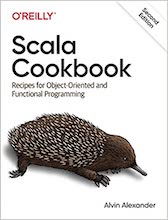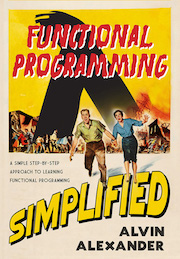|
|
Java example source code file (xml-stylesheet)
This example Java source code file (xml-stylesheet) is included in the alvinalexander.com
"Java Source Code
Warehouse" project. The intent of this project is to help you "Learn
Java by Example" TM.
Learn more about this Java project at its project page.
The xml-stylesheet Java example source code
<!DOCTYPE html PUBLIC "-//W3C//DTD HTML 4.0 Transitional//EN">
<html>
<head>
<title>Associating Style Sheets with XML documents
<link rel="stylesheet" type="text/css" href="http://www.w3.org/StyleSheets/TR/W3C-REC">
<style type="text/css">code { font-family: monospace }
</head>
<body>
<div class="head">
<a href="http://www.w3.org/"> <h1>Associating Style Sheets with XML documents
<h1>Associating Style Sheets with XML documents
Version 1.0
<h2>W3C Recommendation 29 June 1999
<dl>
<dt>This version:
<dd>
<a href="http://www.w3.org/1999/06/REC-xml-stylesheet-19990629">http://www.w3.org/1999/06/REC-xml-stylesheet-19990629
<br>
</dd>
<dt>Latest version:
<dd>
<a href="http://www.w3.org/TR/xml-stylesheet">http://www.w3.org/TR/xml-stylesheet
<br>
</dd>
<dt>Previous version:
<dd>
<a href="http://www.w3.org/TR/1999/xml-stylesheet-19990428">http://www.w3.org/TR/1999/xml-stylesheet-19990428
<br>
</dd>
<dt>Editor:
<dd>
James Clark
<a href="mailto:jjc@jclark.com"><jjc@jclark.com>
<br>
</dd>
</dl>
<p class="copyright">
<a href="http://www.w3.org/Consortium/Legal/ipr-notice.html#Copyright">
Copyright</a> © 1999 W3C
(<a href="http://www.lcs.mit.edu">MIT,
<a href="http://www.inria.fr/">INRIA,
<a href="http://www.keio.ac.jp/">Keio ), All Rights Reserved. W3C
<a href="http://www.w3.org/Consortium/Legal/ipr-notice.html#Legal Disclaimer">liability,trademark,
<a href="http://www.w3.org/Consortium/Legal/copyright-documents.html">document use and
<a href="http://www.w3.org/Consortium/Legal/copyright-software.html">software licensing rules apply.
</p>
<hr title="Separator for header">
</div>
<h2>
<a name="abstract">Abstract
</h2>
<p>This document allows a style sheet to be associated with an XML
document by including one or more processing instructions with a
target of <code>xml-stylesheet in the document's prolog.
<h2>
<a name="status">Status of this document
</h2>
<p>This document has been reviewed by W3C Members and other interested
parties and has been endorsed by the Director as a W3C <a href="http://www.w3.org/Consortium/Process/#RecsW3C">Recommendation. It
is a stable document and may be used as reference material or cited as
a normative reference from other documents. W3C's role in making the
Recommendation is to draw attention to the specification and to
promote its widespread deployment. This enhances the functionality and
interoperability of the Web.</p>
<p>The list of known errors in this specifications is available at
<a href="http://www.w3.org/1999/06/REC-xml-stylesheet-19990629/errata">http://www.w3.org/TR/1999/xml-stylesheet-19990629/errata.
<p>Comments on this specification may be sent to <www-xml-stylesheet-comments@w3.org>. The archive of public
comments is available at <a href="http://www.w3.org/Archives/Public/www-xml-stylesheet-comments">http://w3.org/Archives/Public/www-xml-stylesheet-comments.
<p>A list of current W3C Recommendations and other technical documents
can be found at <a href="http://www.w3.org/TR">http://www.w3.org/TR.
<p>The Working Group expects additional mechanisms for linking style
sheets to XML document to be defined in a future specification.</p>
<p>The use of XML processing instructions in this specification should
not be taken as a precedent. The W3C does not anticipate recommending
the use of processing instructions in any future specification. The
<a href="#rationale">Rationale explains why they were used in
this specification.</p>
<p>This document was produced as part of the W3C XML Activity.
<h2>
<a name="contents">Table of contents
</h2>1 The xml-stylesheet processing instruction
<br>
<h3>AppendicesA References
<br>B Rationale
<br>
<hr>
<h2>
<a name="The xml-stylesheet processing instruction">1 The xml-stylesheet processing instruction
<p>Style Sheets can be associated with an XML[XML10]
document by using a processing instruction whose target is
<code>xml-stylesheet. This processing instruction follows the
behaviour of the HTML 4.0 <code><LINK
REL="stylesheet"></code>[HTML40].
<p>The xml-stylesheet processing instruction is parsed in
the same way as a start-tag, with the exception that entities other
than predefined entities must not be referenced.</p>
<p>The following grammar is given using the same notation as the
grammar in the XML Recommendation<a href="#XML">[XML10]. Symbols in the
grammar that are not defined here are defined in the XML
Recommendation.</p>
<h5>xml-stylesheet processing instruction
<table class="scrap">
<tbody>
<tr valign="baseline">
<td>
<a name="NT-StyleSheetPI">[1] |
<td>StyleSheetPI
<td> ::=
<td>'<?xml-stylesheet' (S PseudoAtt)* S? '?>'
<td>
</td>
</tr>
<tr valign="baseline">
<td>
<a name="NT-PseudoAtt">[2]
<td>PseudoAtt
<td> ::=
<td>
<a href="http://www.w3.org/TR/REC-xml#NT-Name">Name S? '=' S? PseudoAttValue
</td>
<td>
</td>
</tr>
<tr valign="baseline">
<td>
<a name="NT-PseudoAttValue">[3]
<td>PseudoAttValue
<td> ::=
<td>('"' ([^"<&] | CharRef | PredefEntityRef)* '"'
<td>
</td>
</tr>
<tr valign="baseline">
<td>
</td>
<td>
</td>
<td>
</td>
<td>| "'" ([^'<&] | CharRef | PredefEntityRef)* "'")
<td>
</td>
</tr>
<tr valign="baseline">
<td>
</td>
<td>
</td>
<td>
</td>
<td>- (Char* '?>' Char*)
<td>
</td>
</tr>
<tr valign="baseline">
<td>
<a name="NT-PredefEntityRef">[4]
<td>PredefEntityRef
<td> ::=
<td>'&' | '<' | '>' | '"' | '''
<td>
</td>
</tr>
</tbody>
</table>
<p>In PseudoAttValue, a CharRef or a PredefEntityRef is interpreted in the
same manner as in a normal XML attribute value. The actual value of
the pseudo-attribute is the value after each reference is replaced by
the character it references. This replacement is not performed
automatically by an XML processor.</p>
<p>The xml-stylesheet processing instruction is allowed
only in the prolog of an XML document. The syntax of XML constrains
where processing instructions are allowed in the prolog; the
<code>xml-stylesheet processing instruction is allowed anywhere
in the prolog that meets these constraints.</p>
<blockquote>
<b>NOTE: If the xml-stylesheet processing instruction
occurs in the external DTD subset or in a parameter entity, it is
possible that it may not be processed by a non-validating XML
processor (see <a href="#XML">[XML10]).
<p>The following pseudo attributes are defined
<pre>href CDATA #REQUIRED
type CDATA #REQUIRED
title CDATA #IMPLIED
media CDATA #IMPLIED
charset CDATA #IMPLIED
alternate (yes|no) "no"</pre>
<p>The semantics of the pseudo-attributes are exactly as with
<code><LINK REL="stylesheet"> in HTML 4.0, with the
exception of the <code>alternate pseudo-attribute. If
<code>alternate="yes" is specified, then the processing
instruction has the semantics of <code><LINK REL="alternate
stylesheet"></code> instead of <LINK
REL="stylesheet"></code>.
<blockquote>
<b>NOTE: Since the value of the href attribute is a URI
reference, it may be a relative URI and it may contain a fragment
identifier. In particular the URI reference may contain only a
fragment identifier. Such a URI reference is a reference to a part of
the document containing the <code>xml-stylesheet processing
instruction (see <a href="#RFC2396">[RFC2396]). The consequence is that the
<code>xml-stylesheet processing instruction allows style sheets
to be embedded in the same document as the <code>xml-stylesheet
processing instruction.</blockquote>
<p>In some cases, style sheets may be linked with an XML document by
means external to the document. For example, earlier versions of HTTP
<a href="#RFC2068">[RFC2068] (section 19.6.2.4) allowed style sheets to be
associated with XML documents by means of the <code>Link
header. Any links to style sheets that are specified externally to the
document are considered to occur before the links specified by the
<code>xml-stylesheet processing instructions. This is the same
as in HTML 4.0 (see <a href="http://www.w3.org/TR/REC-html40/present/styles.html#h-14.6">section
14.6</a>).
<p>Here are some examples from HTML 4.0 with the corresponding
processing instruction:</p>
<pre><LINK href="mystyle.css" rel="style sheet" type="text/css">
<?xml-stylesheet href="mystyle.css" type="text/css"?>
<LINK href="mystyle.css" title="Compact" rel="stylesheet"
type="text/css">
<?xml-stylesheet href="mystyle.css" title="Compact" type="text/css"?>
<LINK href="mystyle.css" title="Medium" rel="alternate stylesheet"
type="text/css">
<?xml-stylesheet alternate="yes" href="mystyle.css" title="Medium"
type="text/css"?></pre>
<p>Multiple xml-stylesheet processing instructions are
also allowed with exactly the same semantics as with <code>LINK
REL="stylesheet"</code>. For example,
<pre><LINK rel="alternate stylesheet" title="compact" href="small-base.css"
type="text/css">
<LINK rel="alternate stylesheet" title="compact" href="small-extras.css"
type="text/css">
<LINK rel="alternate stylesheet" title="big print" href="bigprint.css"
type="text/css">
<LINK rel="stylesheet" href="common.css" type="text/css"></pre>
<p>would be equivalent to:
<pre><?xml-stylesheet alternate="yes" title="compact" href="small-base.css"
type="text/css"?>
<?xml-stylesheet alternate="yes" title="compact" href="small-extras.css"
type="text/css"?>
<?xml-stylesheet alternate="yes" title="big print" href="bigprint.css"
type="text/css"?>
<?xml-stylesheet href="common.css" type="text/css"?></pre>
<hr title="Separator from footer">
<h2>
<a name="References">A References
<dl>
<dt>
<a name="HTML">HTML40
</dt>
<dd>World Wide Web
Consortium. <i>HTML 4.0 Specification. W3C Recommendation. See
<a href="http://www.w3.org/TR/REC-html40">http://www.w3.org/TR/REC-html40
</dd>
<dt>
<a name="RFC2068">RFC2068
</dt>
<dd>R. Fielding, J. Gettys, J. Mogul,
H. Frystyk Nielsen, and T. Berners-Lee. <i>Hypertext Transfer
Protocol -- HTTP/1.1.</i>. IETF RFC 2068. See http://www.ietf.org/rfc/rfc2068.txt.
<dt>
<a name="RFC2396">RFC2396
</dt>
<dd>T. Berners-Lee, R. Fielding, and
L. Masinter. <i>Uniform Resource Identifiers (URI): Generic
Syntax</i>. IETF RFC 2396. See http://www.ietf.org/rfc/rfc2396.txt.
<dt>
<a name="XML">XML10
</dt>
<dd>World Wide Web Consortium. Extensible
Markup Language (XML) 1.0.</i> W3C Recommendation. See http://www.w3.org/TR/1998/REC-xml-19980210
</dd>
</dl>
<h2>
<a name="rationale">B Rationale
<p>There was an urgent requirement for a specification for style sheet
linking that could be completed in time for the next release from
major browser vendors. Only by choosing a simple mechanism closely
based on a proven existing mechanism could the specification be
completed in time to meet this requirement.</p>
<p>Use of a processing instruction avoids polluting the main document
structure with application specific processing information.</p>
<p>The mechanism chosen for this version of the specification is not a
constraint on the additional mechanisms planned for future versions.
There is no expectation that these will use processing instructions;
indeed they may not include the linking information in the source
document.</p>
</body>
</html>
Other Java examples (source code examples)
Here is a short list of links related to this Java xml-stylesheet source code file:
 The search page
The search page Other Java source code examples at this package level
Other Java source code examples at this package level Click here to learn more about this project
Click here to learn more about this project
